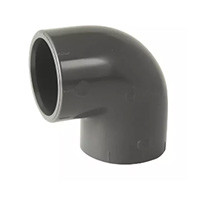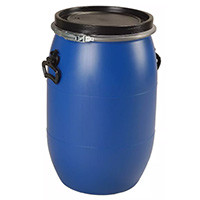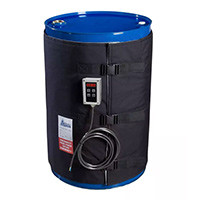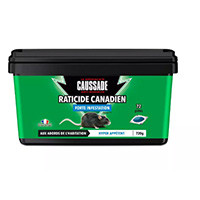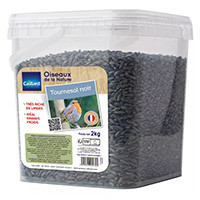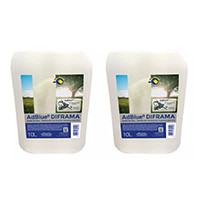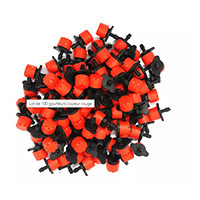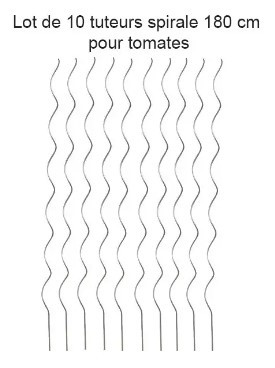
The hole in the ozone layer is being closed
After three decades of observation, scientists have finally discovered the first signs of restoration of the infamous ozone hole in the Southern Hemisphere.
In 1974, Mario Molina and Sherwood Rowland, two chemists from the University of California, Irvine, published an article in the journal Nature outlining the threats to the ozone layer posed by chlorofluorocarbon (CFC) gases. At the time, CFCs were frequently used in spray bottles and as coolants in many refrigerators, accumulating rapidly in the atmosphere.
According to their groundbreaking research, for which they were awarded the Nobel Prize in Chemistry in 1995, the atmosphere has a "limited capacity to absorb chlorine atoms" in the stratosphere.
After fierce attacks from the chemical industry, the work of the two researchers was finally recognized 11 years later, in 1985, when a team of British scientists realized the disastrous consequences of their findings. CFCs in the atmosphere had indeed caused a hole in the ozone layer. Degradation of the ozone shield can lead to increased rates of skin cancer in humans and animals.
A RESTORATION IN SIGHT
The team of researchers, led by Susan Solomon (a professor of atmospheric chemistry and climate science at the Massachusetts Institute of Technology (MIT)), found many signs that the ozone layer is "healing." The results were published last Thursday in the journal Science.
The ozone hole forms over Antarctica each year beginning in August and typically peaks in October. Susan Solomon's team compared measurements of the ozone hole in September, collected from weather balloons and satellites, with statistics calculated by statistical forecasting tools.
The researchers found that in recent years, the hole reached the 12 million square kilometer threshold much later in the southern spring, indicating that the observed September hole in the ozone layer has shrunk significantly. According to scientists, the ozone hole has shrunk by more than 4 million square kilometers. The hole is also not as deep as it once was.
"The fact that there is a delay in the opening of the ozone hole is really key," says Susan Solomon. "It's growing in area later in the year, it's smaller and it's getting shallower. All the measurements are made independently and it's hard to imagine an alternative explanation even though they all suggest resorption."
The researchers also found that the observations matched the predictions and that more than half of the reduction was attributable to the decrease in chlorinated substances in the atmosphere.
According to Donald Blake, professor of chemistry at the University of California, Irvine, this is the most comprehensive study of polar ozone to date
"It's hopeful, and it shows us that we shouldn't be afraid to take on the big environmental issues."
GETTING TO THE HEART OF THE MATTER
During the 1980s, ozone in the atmosphere dropped dramatically, right at the beginning of the plague. The implementation of the Montreal Protocol in 1987, considered a true success in international cooperation, progressively banned industrial chlorinated and brominated gases (CFCs) and the ozone layer stabilized.
The size of the ozone hole varies from year to year, depending on meteorological conditions and volcanism, making it difficult to identify a resorption trend. While it has remained relatively stable since the beginning of the century according to scientists, its size was the largest ever recorded in October 2015.
Scientists have long suspected a slow recovery of the ozone layer; Susan Solomon and her team (including researchers from MIT, the National Center for Atmospheric Research, and the University of Leeds), however, are the first to advance rigorous evidence for this improvement.
Susan Solomon attributes the anomalous size of the hole in 2015 in large part to the April 2015 eruption of the Calbuco volcano in Chile. While volcanoes do not release chlorine molecules into the atmosphere, their small particles contribute to the increase in polar stratospheric clouds that react with man-made chlorine.
FUTURE IMPACTS
These results indicate that ozone depletion is exactly on schedule. According to Donald Blake, this demonstrates a reduction of ozone-affecting gases in the atmosphere.
Both Susan Solomon and Donald Blake expect this slow resorption trend to continue; a full recovery is not expected until 2050. Although CFC production ceased in the 1990s, the chlorine molecules produced in the 1970s and 1980s are still roaming the atmosphere, due to their 50- to 100-year life span.
Still, these results are the culmination of decades of work by scientists, engineers and diplomats around the world.
"This has been a remarkable journey," says Susan Solomon. "It's hopeful and it shows us that we shouldn't be afraid to take on big environmental issues."
Donald Blake adds, "It's wonderful...to get an article that specifically states that the results are as good as we expected makes me very happy. If only Sherry [Sherwood Rowland] were alive today...he would be so happy to read this."
article link: https: //www.nationalgeographic.fr/environnement/le-trou-dans-la-couche-dozone-serait-en-train-de-se-resorber
At multitanks, everyone is convinced that the future of refrigerant gases will be hydrocarbon gases. We will continue to promote these more environmentally friendly gases
Share this content





